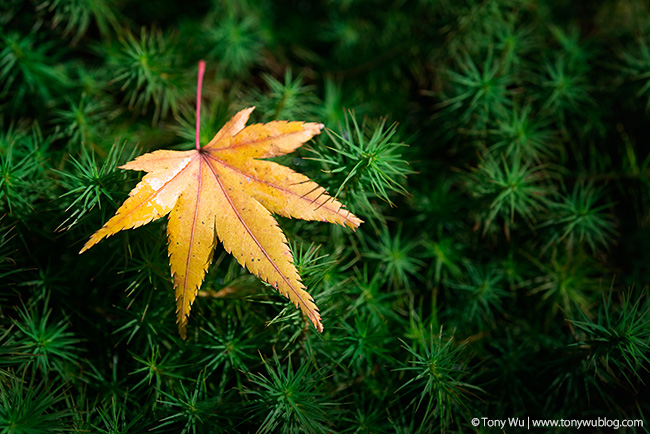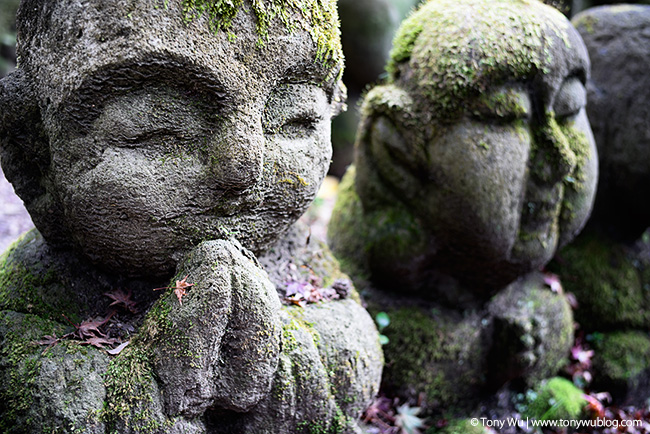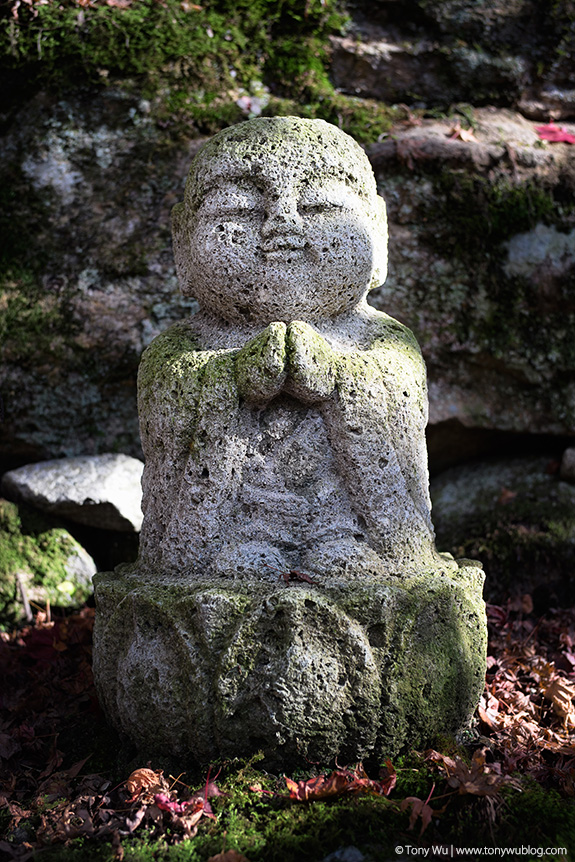There is beauty all around us, if we take time to observe and enjoy.
I was reminded of this while in Kyoto last week to relax, recoup, and contemplate the changing of seasons via autumn foliage.

The weather, as it turned out, wasn’t keen on cooperating. It was cloudy for the most part, rain here and there. The brilliant warm hues that adorn momiji Japanese maple trees each fall were burnt-out. Tired, drab, dull. It wasn’t a great season for autumn leaf colours.
Bummer, but life goes on.
If there’s one thing I’ve learned from nature, it’s that there are no constants. Everything changes, all the time, and usually cycles back around, given enough time.
Instead of obsessing about the lackluster foliage, we turned our attention to other things. Splendid carpets of moss; delicate mushrooms and other intricate fungi sprouting in the moist undergrowth; enigmatic expressions on Buddhist sculptures.

We weren’t, of course, the only people around. There were other visitors. Many of them. Thousands of tourists, with flags and voices raised, swarming through the city’s well-known areas.
Most however, seemed oblivious to everything except where to stop to take photos of themselves.
The perfect illustration of this was a young couple at the famous Sanzen-in (三千院) in the Ohara area.
There is a stone figure at the temple that apparently dates back to the Kamakura period in Japanese history, at least that’s what a sign suggested.
We were strolling over for a look, just approaching the figure.
A couple who appeared to be in their 20s rushed over, nudged us aside, pushed ahead, turned around, held out a selfie-stick armed with phone, raised their index and middle fingers in a peace sign, said “cheeeeeeeezzzzzzzuuuuuuu” (the Japanese pronounciation for cheese), snapped a selfie, checked selfie, conferred, repeated procedure three times, oblivious to us and other annoyed people.
They left only after they were satisfied with one of their multiple attempts at perfecting the photographic masterpiece of themselves, having never once actually looked at or appreciated the stone figure, much less read about the history and context.
I swallowed my disgust, turned away, walked down the path to enjoy other things.
Moments later, I pulled out my own phone and messaged a trusted friend in Australia, one I carry on daily conversations with, often about topics pertaining to the greater meaning of life.
In relating what had just transpired, I realised that what I felt wasn’t anger as much as pity.
Though the couple was a particularly stark example, almost everyone else we came across during our walks around Kyoto behaved in a similar manner.
In other words, rather than say, walking through the peaceful grounds of a beautiful temple and enjoying not just the visual context, but also the spiritual and historical import, most visitors were preoccupied with snapping selfies and posting them immediately to the Internet.
Far too many were happy to elbow others out of what were obviously deemed choice selfie-spots.
Few were looking at the sites. Fewer still stopped to relax and observe. Nearly everyone was facing the opposite direction of whatever they were photographing, because the primary subject was themselves.
Think about it. People had travelled to Kyoto for the primary purpose of photographing themselves.
What a shame.
We wandered off to a quiet spot, sat down and watched water flow by; we contemplated leaves; we enjoyed the forest of tiny plants and plethora of organisms that went about their lives at ground level.
Serenity restored, we moved on.
I never did get to see that figure from the Kamakura period. Wasn’t ready to revisit the scene of the selfish selfie. Perhaps I’ll be fortunate enough to visit again, when people have learned to get their priorities straight.
